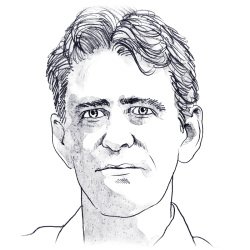A compound from the bark of the Chilean soapbark tree is revolutionising vaccine adjuvants. But because of climate change and illegal logging in Chile’s Quillay forests, bark supplies are running low, jeopardising global efforts to eliminate malaria.
Sickly Sweet
How the terminal sugar molecules on our cells reglulate our interactions with pathogens and help make us who we are.
Why do humans cry?
We all cry - I tend to get particulary weepy on planes. But what biological function do tears serve and why are humans the only species that shed tears of sorrow and joy?
The Heart of the Matter
It was on a routine visit to the doctor that my GP uttered the phrase every middle-aged man dreads: "Your blood pressure is a little raised”
Spanish Flu: the killer that still stalks us
The 1918-1919 influenza pandemic the deadliest pandemics of modern tiems, claiming at least 50m lives globally. But despite more than a century of scientific advances, we still don’t know where the “Spanish flu” came from, or why the virus proved so deadly to adults in the prime of life.
Ebola: the road to zero
How our modern world creates outbreaks like coronavirus
“Everyone knows that pestilences have a way of recurring in the world,” observes Albert Camus in his novel The Plague. “Yetplagues and wars always take people by surprise.” Camus was imagining a fictional outbreak of plague in 1948 in Oran, a port city in northwest Algeria. But at a time when the world is reeling from a very real microbial emergency sparked by the emergence of a novel coronavirus in Wuhan, China, his observations are as pertinent as ever.
How do pandemics end?
New Life through A Lens
As Germany succumbed to anti-semitism in the 1930s, Ernst Leitz, the owner of Leica cameras, defied the Nazis by arranging for Jewish apprentices at his factory in Wetzlar to emigrate to the United States. In 2007, shortly before Leitz received a posthumous honour from the Israeli state, I travelled to Wetzlar to interview his grandson about the ‘Leica underground’ and his grandfather’s motivations.
My part in the 7/7 conspiracy theory that refused to die
In 2006, I accidentally triggered a conspiracy theory about the London tube bombings. It was a preview of how the internet and social media would make us more susceptible to rumours and information taken out of context.
Teen spirit: Andy Murray on girls, growing pains and winning Wimbledon
In June 2006 The Observer sent me to Rome to interview Andy Murray, then a nineteen-year-old teenager but already being tipped as the future of British tennis. We talked about surviving the Dunblane massacre, his parents separation, and what is was like to carry a nation’s tennis hopes on his shoulders. Murray was eliminated in the next round of the Rome Open but would go on to win Wimbledon twice.
https://www.theguardian.com/sport/2006/jun/11/tennis.features
Diana and the tabloids: the real story
The Spectator
27 September 1997
In 1997, shortly after Princess Diana’s tragic death in a car accident in Paris while trying to evade paparazzi in the Pont d’Alma tunnel, I re-examined her fraught relationship with the British tabloids. Though at the time her brother Earl Spencer and others were claiming she had been a victim of the ‘red-tops’, my report revealed a more complex story, one in which Diana was often a willing accomplice of tabloid editors and journalists.













